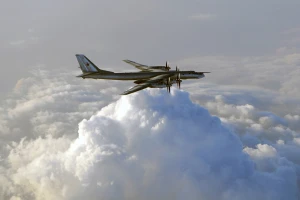
What is puzzling about Russian IL-76 downing story? Column by Serhiy Zgurets
Russian excessive and swift reaction to the plane downing is surprising, as well as the aggressive informational attack Russia is conducting, mentioning Ukrainian captured soldiers who supposedly perished
Draft law on mobilization
I will start with the law on mobilization. At the end of last year, Ukraine's Cabinet of Ministers submitted a draft law to the Parliament that proposed strengthening mobilization measures. The government's draft law was found to have many shortcomings, prompting the Cabinet to withdraw the document from the Verkhovna Rada. Currently, there is an expectation in the parliament that the new draft law will be more balanced and focused on the motivational aspects for those who are to be mobilized.
Recently, there have been some versions and amendments circulating regarding these revisions. Later, it was stated that, in reality, the parliament does not yet have this draft law in the form that is supposed to encompass all the desired changes. In essence, we are currently in a state of anticipation. Although I had hoped that the draft law would be discussed this week, given its utmost relevance and necessity, provided it is correctly formulated with all the nuances.
Pavlo Kyshkar, Deputy Commander of the Artillery Division, Major, and former Member of the Ukrainian Parliament, emphasized that frontline forces believe the mobilization draft law needs to be passed as quickly as possible. He finds the President's position perplexing, as he also has legislative initiative and could present a well-prepared draft law. However, there has been no fundamental reform in the Ukrainian Armed Forces overall. It is unlikely that accelerating mobilization will improve the quality of the Ukrainian Armed Forces. Soldiers report that discussions in Kyiv are addressing issues that should have already been resolved. For instance, funding for the development of arms and military equipment, planned for three years, does not exist. There is no specific person held accountable for this. This lack of clarity in responsibility extends to mobilization issues as well.
The major believes that mobilization should consist of three parts. First, external mobilization is crucial given the suspension of military-technical assistance from the West. Second, internal mobilization is proposed, referring to the law on engaging men aged 27 to 60 in military service. The suggestion is to initiate internal mobilization starting from the government, targeting positions within the government, power cabinets, and administrations listed as 'untouchables' and exempt from mobilization. If the authorities were to declare that certain roles in state and local government bodies no longer accept people liable for military sevice, lift immunity from everyone, and involve only individuals not subject to mobilization—such as women, men over 60, those with disabilities, and large families. In essence, the call is for the government to lead by example.
Kyshkar pointed out that the military expects employees of the Ministry of Internal Affairs, the National Anti-Corruption Bureau (NABU), and the State Bureau of Investigations (DBR) to join the ranks of the Ukrainian Armed Forces. If they are men, let them stand beside us. We will train them, prepare them in three months, and they will fight alongside us. They already know what weapons are and how to use them. We will train them to the appropriate qualification level to engage in combat with the enemy. Talking about the draft law not being suitable, that we cannot follow the current legislation – that's not the point. We need to submit a clear draft law that is a compromise for the entire Ukrainian society. If the government started with itself, mobilized its surplus bodies of state administration – and there are enough of them – we would be ready to accept this internal mobilization of more prepared individuals as brothers in arms.
The major added that the government also took an oath and guaranteed that it would fight and uphold Article 17 of the Ukrainian Constitution. Therefore, they should send their men to us, and we will help them.
The major proceeds to the third part of mobilization—the technical aspect, which is a distinct issue. He criticizes seemingly futile meetings at the General Staff and the Ministry of Defense, arguing that modern weapons are not reaching the front lines anymore. He emphasizes that processes like the reform of the security and defense sector should have been concluded much earlier, and instead of discussions, there should be new weapon models on the front lines. He challenges those incapable of achieving this to admit it, step down, and head to the front, and let others take over. He emphasized the need for quality decisions to ensure there are adequate resources for the front lines, asserting that there are sufficient developments available for that purpose.
On Russian IL-76 downing
Now, let's explore the significant events of this week, starting with the incident involving the downing or crash of a Russian plane in the Belgorod region. What stands out is the rapid and intense reaction from the Russians to the incident. Furthermore, the aggressive informational onslaught from Russia, referencing Ukrainian captured soldiers who purportedly died, is perplexing. This strikes a sensitive chord in the perception of Ukrainian society.
Mykhailo Samus, a military expert and director of the New Geopolitics Research Network, along with his role as an expert at the Center for Army, Conversion, and Disarmament Studies, has emphasized a recurring pattern: when facing challenges on the front lines, the Russians tend to shift to a hybrid format known as the "war of a new generation." This involves alternative methods such as information-psychological operations (PSYOP) and disinformation aimed at stoking internal conflicts. The incident with the Il-76, still not fully understood, is rapidly being exploited by Russia in line with the PSYOP and hybrid influence algorithm. There's a sense that a decision, possibly involving figures like Sergey Kiriyenko (the first deputy chief of the presidential administration of the Russian Federation), known for favoring such approaches, was made at the higher echelons of the Russian administration, with rapid execution vertically, involving the State Duma, Ministry of Defense, military commanders, and even Margarita Simonyan (Russian propagandist figure - ed.) – all coordinated within minutes. The observation leads to the conclusion that it was indeed an operation.
The military expert noted regarding the incident with the plane downing, the only thing that can be said for certain is that the military transport aircraft Il-76 is a legitimate target for the Ukrainian Armed Forces. Especially since such aircraft are used to transport S-300 missiles for the shelling of Kharkiv and other Ukrainian cities. Whether there were Ukrainian prisoners of war on board this plane or if it was a provocation remains uncertain. This raises the question: why did the Russians, understanding the danger of Ukraine deploying air defense systems within a 30 km zone from the front, still use aviation? Therefore, the question must be raised for Russia to close its airspace, just as Ukraine did, at least over the European part of the coutnry. The war is unfolding in Russia too, and it's crucial to acknowledge this. This incident might warrant international considerations for closing airspace over the European part of Russia.
The director of the New Geopolitics Research Network added that the Russians have not yet shown the bodies of the deceased, if there were indeed around 80 people, including the crew, and this is surprising. There are no bodies on the video they showed or in the photos. If the situation was as they describe it, Russia would have have extensively used it in the UN, OSCE, and other international forums. Currently, we have only seen the wreckage of the plane and one body, which was blurred, possibly a member of the crew. Therefore, the situation is very, very unclear. In this case, Ukrainian communication with the West is crucial to clearly establish the facts. It's evident that Ukrainian intelligence and our air defense have objective information about the flight path of the aircraft, whether it was landing or taking off, and other details that would expose the fabrication of this Russian PSYOP.
Samus emphasized that President Zelenskyy's demand for an international investigation into this incident is absolutely the right approach. However, in addition, the Russians unofficially published lists of prisoners who allegedly were on board the Il-76. In that list, about 17 Ukrainian citizens were found, who had already been exchanged or were marked in other lists. So, the information is very, very murky. By the way, these lists were published by Margarita Simonyan, so Russia's official authorities may claim that they are unaware of these lists and do not endorse the actions of the journalist. The paradox of the situation is that the Russians have not presented any official facts. All of this falls within the boundaries of information-psychological operations.
- News













































